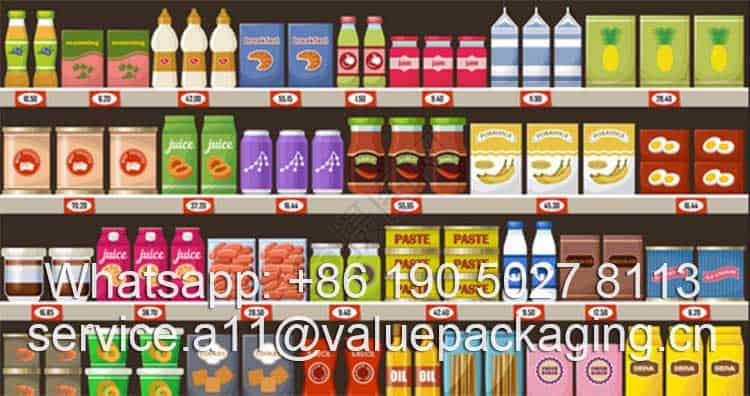
Flat zipper bags are a large part of the cumin granule packs in the current market. With a flexible combination of various fossil chemical and plant-based film materials, the flat zipper bags can prevent the cumin granule from moisture and oxygen during transportation and distribution, and be more cost-effective than bottles and jars. As a price consideration, PET/LDPE is widely used in packages for various cumin granules. Moreover, two sides of the bags will be printed with creative artwork to satisfy customers’ needs for branding and sale.
As a well-known flexible packaging manufacturer located in Qingdao, China, we are making the best use of the packaging film materials in the market, listed below.
- fossil chemical polymer films
- Aluminum foil metal sheet
- vacuum metalized film materials
- Ceramic film substrates
- plant-based biopolymer materials
- biodegradable film materials
- compostable substrate films
- Fully recyclable substrate films
We are devoted to creating story-telling packages that increase product sales and establish a good brand image.
In this post, we will analyze the exact materials of this 50-gram cumin seeds poly bag pouch, hoping it could serve as a reference for your products.

Ok, let’s get into the details of this 50-gram cumin seeds flat zipper bag.
Packaging Foil Materials
This foil material has a reinforced structure with excellent properties for cumin seed packages. The foil structure is PET12/LDPE120, and the graphic is as below.

It is made of two layers, with the outside PET film 12 microns working as the print substrate film, and the LDPE film working as the inner sealing layer. The thickness of the LDPE film should be adjusted to suit the requirements of 50g cumin seeds.
Next, let’s get a deeper understanding of each substrate film material.
PET12 Film
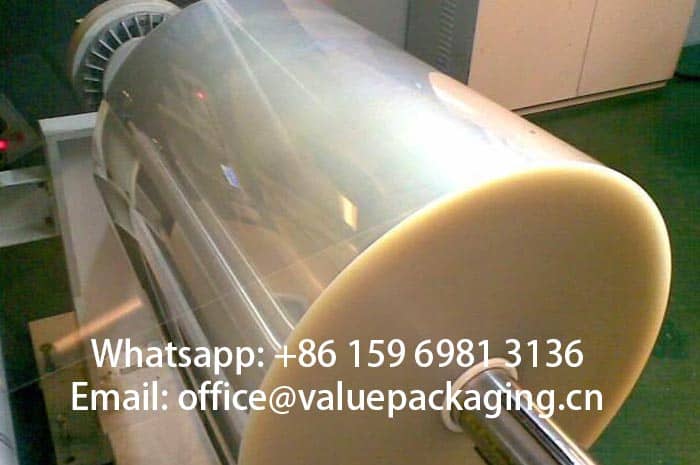
PET12 is one of the most commonly used printing substrates in flexible packaging pouches. With great clarity, stable mechanical strength, and excellent printability, it can present the customer artwork print in great quality. Physical Properties:
- Strength: It has good tensile strength and can withstand a certain amount of pressure and impact without breaking easily. This is important to protect the 50g of cumin seeds from damage during transportation and handling.
- Barrier Properties: PET12 provides a good barrier against moisture and gases to some extent. It can prevent the ingress of moisture, which could cause spoilage of the cumin seeds as they might absorb moisture and become moldy, and also that could affect the flavor of the cumin seeds.
LDPE Film
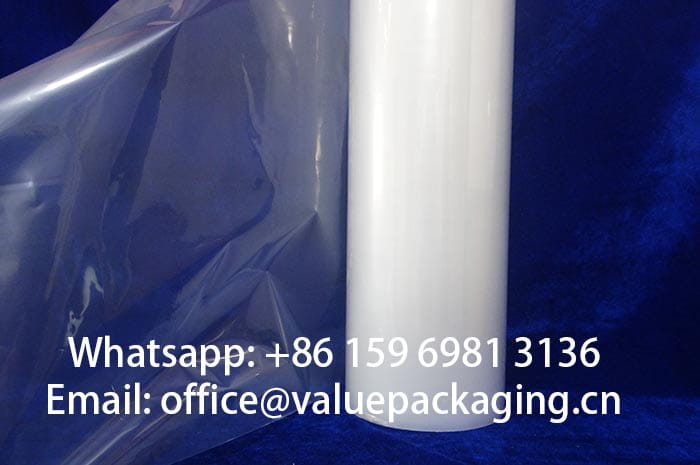
LDPE means low-density polyethylene film, which is the most used inner sealing layer for seasoning bags. It can provide enough sealing strength and airtight properties for the final packages. LDPE is also lightweight, easy to fabricate, and has good chemical and impact resistance. LDPE is recyclable and reusable, making it a popular alternative to traditional plastic. LDPE is nontoxic, non-contaminating, and has a high degree of break resistance. Most importantly, LDPE membrane can be modified against the requirement of specific products, and finalize the package with great seal strength and protection. The thickness of the LDPE membrane film will be decided against the particular application.
The customer artwork is printed reversely on the inner side of the first PET film layer in the gravure printing system. These 2 layers are bonded together into a finished laminated foil material under the dry lamination or solvent-free lamination process. Usually, we describe the finished laminate as PET/LDPE foil.
Thickness
As you can see in the below picture, the overall thickness of this spout pouch is 0.345 mm, which equals 345 microns for this laminated foil.

Usually, we describe the finished laminate as PET12/LDPE120 foil. So, how does this foil structure perform when it is intended for standup cumin seed packs? Will it break during the distribution?
Excellent Outside Profile
This two-foil laminate PET12/LDPE120 is of enough stiffness to provide a good profile for 50 grams of cumin seed products. Through the video below, you are going to have an actual understanding of the effect.
As stated above, PET is known for its excellent clarity, strength, and barrier properties, and LDPE on the other hand, offers flexibility and enough sealing strength. It ensures that the bags can be easily sealed, so the good outside profile of these bags is crucial. First, it helps customers pay attention to the store shelves. With eye-catching artwork and clear information, the packaging can effectively communicate the quality of the cumin seeds. It could include important details such as the origin of the seeds, used instructions, and nutritional information, which are essential for customers to make informed purchasing decisions.
In conclusion, the PET/LDPE structure for cumin seeds packaging bags offers a dream profile for customers.
Mechanical Property
The package will protect the cumin seeds product during filling, transit, and distribution. Under the emergency circumstances of unexpected shock in delivery or packages falling off the goods shelf, the bags will never be allowed to break. Can you ever imagine how much trouble it would be to dispose of scattered little cumin seeds?
The mechanical property of this flat zipper sachet is the top priority in our manufacturing plant. Serious measures are taken in our QC system, to assure each order is finalized with the expected result.
To put it simply, a drop test of the most reliable way to check if the package may be broken under sudden sharp forces.
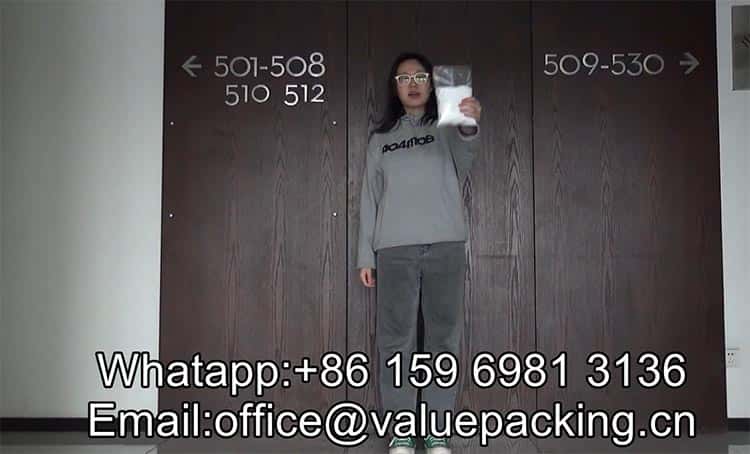
Here in the video below, let us temporarily take the same weight of the product packaging bag as an example, we are going to fill 50g of products into this bag, perform the drop test from 1.6 meters high, 3 times, and check if it breaks.
If the cumin seeds volume and grams increase, you can choose to add a layer of PA film material to increase the strength of the bag, and we may need to change the foil structure, like PET/PA/LDPE for packs around 200 grams.
Ok, You may reach us for further ideas if you have any questions.
Barrier Performance
Usually, the barrier performance of a multi-material laminate is evaluated by WVTR (short for water vapor transmission rate) and OTR (Oxygen Transmission Rate). The below table shows the typical value of the WVTR and OTR of the most common substrate films in flexible packaging.

Upon experience, the partial packages for cumin seeds should be moisture isolated and sealed to protect the formula work as expected. The main reason is cumin seeds are rich in volatile oils, which are the main source of cumin’s unique aroma. However, these volatile oils are very easy to oxidize with oxygen in the air, resulting in loss of aroma. Sealed storage can reduce contact with air and slow down the oxidation process. And although cumin seeds themselves have a low water content, they may still be affected by moisture. Sealed storage prevents the intrusion of external moisture and keeps cumin grains dry, thus extending their shelf-life
However, please keep in mind that, the barrier property of this laminated foil is just a part of the measures taken to ensure the shelf life of cumin seed products.

More Sustainable Materials Options
Along with the increasing burden of fossil-chemical polymer materials discarded into our environment, there is an unprecedented demand for sustainable packages which leads to a more eco-friendly activity of the business. Upon the recent investigation of the seasoning market, more and more consumers are more likely to purchase a product that acts toward environmental sustainability.
Compostable Packaging Materials

The compostable packages are based on plant-based fibers like cellulose, or bio-mass like corn starch, cassava, or sugarcane. The resins derived from these resources are usually named bio-polymer, which can break down into inorganic elements under the functions of algae, bacteria, and other microorganisms.
At present, we have developed several compostable foil materials that can be intended for seasoning, with list as below.
- Cellulose/Metallized Cellulose/PLA+PBAT Film
- Cellulose/Metallized Cellulose/PBS Film
Fully Recyclable Mono Materials
Compared with the high cost of compostable foil materials, fully recyclable materials sachets, and rolls are flooding the market for lightweight product packages in the market at much lower prices. Mono materials packages mean each layer of the multi-layer foil is made of the same resin, which can be easily processed in the human recycling system and reused for other applications. This recyclable materials sachet largely reduces the rate of plastic polymer film packages ending in landfills.
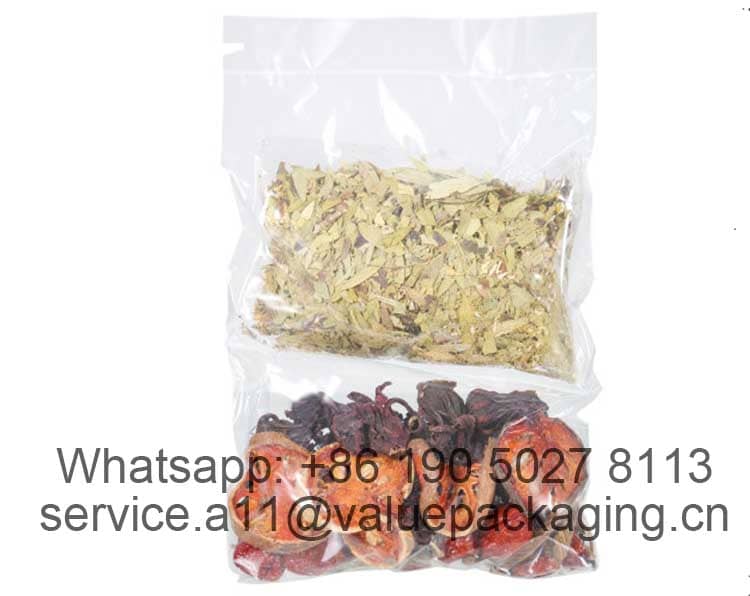
Nowadays, we have developed some pouches based on single resin film materials, that can be found in good application for cumin seed products. Limited to the mechanical strength of current materials

Ok, let’s end here, you may reach us if you have any questions, nice day.
